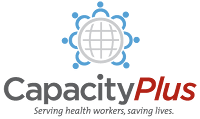Retention
Career Intentions Of Final Year Medical Students in Uganda After Graduating: The Burden of Brain Drain
Uganda has severe shortage of human resources for health despite the heavy disease burden. The country has one of the highest fertility, and population growth rates in the world and is in dire need of trained health workers. The aim of the study was to determine the career intentions of the final year medical students to leave the county and health field after graduating and the associated factors. [from abstract]
- 857 reads
Incentives for non-physician health professionals to work in the rural and remote areas of Mozambique—a discrete choice experiment for eliciting job preferences
Successfully motivating and retaining health workers is critical for the effective performance of health systems. In Mozambique, a shortage of health care professionals and low levels of staff motivation in rural and remote areas pose challenges to the provision of equitable health care delivery.
- 660 reads
Women Doctors and their Careers in a Large University Hospital in Spain at the Beginning of the 21st Century
The aim of this article was to compare the advance of women with that of men and determine the differences between hierarchical status and professional recognition achieved by women in medicine. Methods A retrospective study was carried out in the Hospital Clinic Barcelona, Spain, of the period from 1996 to 2008. [from abstract]
- 526 reads
Work-related Mental Consequences: Implications of Burnout on Mental Health Status Among Health Care Providers
Burnout can create problems in every aspect of individual’s’ human life. It may have an adverse effect on interpersonal and family relations and can lead to a general negative attitude towards life. The purpose of this study is to investigate whether burnout is associated with the mental health status of health care providers. [from abstract]
- 681 reads
The Consequences of Burnout Syndrome among Healthcare Professionals in Spain and Spanish Speaking Latin American Countries
The goal of this paper is to identify the frequency and intensity of the perception of adverse professional consequences and their association with burnout syndrome and occupational variables. [from abstract]
- 566 reads
The Factors that Attract Healthcare Professionals to and Retain Them in Rural Areas in South Africa
Attracting healthcare professionals (HCPs) to rural areas and retaining them there remains a challenge. Current retention strategies focus on the factors that cause people to leave rural areas, but these strategies continue to fail to retain HCPs in these areas, and the situation in which there is a lack of quality and inadequacy of the type of health services is perpetuated. The literature describes factors that attract healthcare workers to work in rural areas, and this study contributes to a deeper understanding of this. [from abstract]
- 1006 reads
Conceptualizing the Impacts of Dual Practice on the Retention of Public Sector Specialists - Evidence from South Africa
‘Dual practice’, or multiple job holding, generally involves public sector-based health workers taking additional work in the private sector. There has been little conceptual or empirical development of the relationship between dual practice and retention. This article helps begin to fill this gap, drawing on empirical evidence from a qualitative
study focusing on South African specialists. [from abstract]
- 730 reads
Evaluation du Programme d'appui à la Médicalisation des Aires de Santé Rurales au Mali
L’évaluation avait pour but d’apprécier la pertinence, l’efficacité et la viabilité de ce programme de médicalisation, notamment des stratégies développées pour attirer et maintenir les médecins dans les zones rurales. [from resource]
- 515 reads
Factors That Influence the Retention of Rural Health Workers in the Hospitals Within Siaya County
The objective of the study was to investigate the factors that influence retention of rural health workers in hospitals in Siaya County, Kenya. [Adapted from resource]
- 727 reads
ASHP Guidelines on the Recruitment, Selection, and Retention of Pharmacy Personnel
These guidelines are intended to assist pharmacy managers in the recruitment, selection, and retention of qualified employees. The pharmacy manager working in an organized health care system will usually have to work with the system’s human resources department and within the framework of the specific recruitment, selection, and hiring policies of the organization. [from introduction]
- 782 reads
Using Evidence for Human Resources for Health Decision-Making: An Example from Uganda on Health Workforce Recruitment and Retention
This technical brief offers six recommendations to help national stakeholders transform evidence into policy decisions and subsequent action. Using an example from Uganda, the authors illustrate how the development and sharing of evidence can support decision-making for change in health workforce recruitment and retention policies, toward the aim of improving access to high-quality health care for the population. [from introduction]
- 991 reads
Rwanda's Evolving Community Health Worker System: A Qualitative Assessment of Client and Provider Perspectives
Community health workers (CHWs) can play important roles in primary health care delivery, particularly in settings of health workforce shortages. However, little is known about CHWs’ perceptions of barriers and motivations, as well as those of the beneficiaries of CHWs.[from abstract]
- 734 reads
Intent to Stay in the Nursing Profession and Associated Factors Among Nurses Working in Amhara Regional State Referral Hospitals, Ethiopia
Nurses are essential to the health care delivery system especially to meet the health related millennium development goals. However, despite the significant shortage of nurses in Ethiopia, research in the country regarding nurses’ intent to stay in their profession is lacking. This study assessed intent to stay in the nursing profession and associated factors among nurses working in referral hospitals, Amhara Regional State, Ethiopia. [from abstract]
- 1131 reads
The Impact of Team Building on Communication and Job Satisfaction of Nursing Staff
A series of team-building activities were conducted on a medical-surgical unit and their impact on staff’s communication and job satisfaction was examined. Forty-four unit personnel participated in the interventions. Staff communication and job satisfaction were measured before and after the intervention. The findings linked team-building activities with improved staff communication and job satisfaction. [from abstract]
- 2024 reads
The Organizational Culture of a Brazilian Public Hospital
The objective of this research was to analyze the organizational culture of a Brazilian public hospital. It is a descriptive study with quantitative approach of data, developed in a public hospital of São Paulo State, Brazil. [from abstract]
- 939 reads
Improving Health Care: The Results and Legacy of the USAID Health Care Improvement Project
This report is not just a summary of a USAID-funded project: It is an extensively-documented milestone for global efforts to improve health in lower- and middle-income countries (LMICs). Increasingly, the central strategy for global health efforts to save lives focuses on selected, high impact interventions. Organizations have
supported these interventions chiefly by providing the required resources, such as training, drugs, and technical
assistance. But in order to implement any kind of service, the health system uses standardized processes for both
clinical and non-clinical activities.
- 562 reads
Lessons on Attraction and Retention of Health Staff
This predominantly quantitative research paper interrogates the attraction and retention of health professionals at eleven randomly selected health centres in Gweru municipality, Zimbabwe. [from abstract]
- 667 reads
Financing Health Care: How to Bridge the Gap in Human Resources for Health
Worldwide there are different systems for providing pharmacy services. Most countries have some element of state assistance,either for all patients or selected groups such as children, and some private provisions. Medicines are financed either through cost sharing or full private. The role of the private services is therefore much more significant. Nationally, there is a mismatch between the numbers of pharmacists and where are they worked, and the demand for pharmacy services. [from abstract]
- 616 reads
The Engagement of East and Southern African Countries on the WHO Code of Practice on the International Recruitment of Health Personnel and Its Implementation
This synthesis report is part of the Regional Network for Equity in Health (EQUINET) programme of work on Contributions of global health diplomacy to health systems in sub-Saharan Africa: Evidence and information to support capabilities for health diplomacy in east and southern Africa. The programme aims to identify factors that support the effectiveness of global health diplomacy (GHD) in addressing selected key challenges to health strengthening systems in eastern and southern Africa (ESA). [from introduction]
- 563 reads
Availability of Medical Staff in Poland in Comparison to Other EU Countries
Access to medical staff differs across Europe. In 2011, the country that had the smallest number of physicians in all European Union was Poland. During last ten years, the number of doctors per capita increased in all European countries except Poland and Estonia. The aim of the study is to analyse the availability of medical staff in Poland and selected EU countries in the years 2003-2011. [from abstract]
- 632 reads
Medical and Nursing Students' Intentions to Work Abroad or in Rural Areas: A Cross-Sectional Survey in Asia and Africa
The objective of the study was To assess medical and nursing students’ intentions to migrate abroad or practice in rural areas. Researchers surveyed 3199 first- and final-year medical and nursing students at 16 premier government institutions in Bangladesh, Ethiopia, India, Kenya, Malawi, Nepal, the United Republic of Tanzania and Zambia. The survey contained questions to identify factors that could predict students’ intentions to migrate. [from abstract]
- 689 reads
Understanding the Labour Market of Human Resources for Health in Sudan
This document provides an overview of the HRH labour market in Sudan, highlighting the importance of a comprehensive approach to understanding the driving forces that affect the supply and demand for health workers, in order to provide a basis for developing effective HRH polices that can contribute to progress towards universal health coverage. [from abstract]
- 871 reads
The Linkage Between Work-Related Factors, Employee Satisfaction and Organisational Commitment: Insights from Public Health Professionals
The public health sector in South Africa faces a number of human resource–related inundations. Solving these challenges requires the provision of empirically derived information on these matters. This study investigated the relationship between three work-related factors, person-environment fit, work-family balance and perceived job security, and employee satisfaction and organisational commitment. A conceptual framework that links these factors is proposed and tested. [from abstract]
- 592 reads
Transforming and Scaling Up Health Workforce Education and Training for Health Equity
CapacityPlus hosted a knowledge-sharing and dissemination event at the National Press Club in Washington, DC, on March 18. The three-hour program featured presentations on key messages from the 2014 Prince Mahidol Award Conference, which focused on transformative learning for health equity; the World Health Organization’s recommendations for health worker education and retention; and innovative approaches and tools developed by CapacityPlus in collaboration with global and national partners.
- 625 reads
Rural Health Worker Retention Tools
Many countries struggle to attract and retain sufficient numbers and types of health workers to provide quality services in rural and remote areas. To encourage country ownership and advocate for use of data for policy-making, the USAID-funded CapacityPlus project developed several tools, including the Rapid Retention Survey Toolkit; a companion software product, iHRIS Retain, developed in collaboration with the World Health Organization (WHO); and a discrete choice experiment user guide, developed in collaboration with the World Bank and the WHO. [from introduction]
- 612 reads
Early Implementation of WHO Recommendations for the Retention of Health Workers in Remote and Rural Areas
This paper presents experiences with local and regional adaptation and adoption of WHO recommendations. It highlights challenges and lessons learnt in implementation in two countries – the Lao People’s Democratic Republic and South Africa – and provides a broader perspective in two regions – Asia and Europe. At country level, the use of the recommendations facilitated a more structured and focused policy dialogue, which resulted in the development and adoption of more relevant and evidence-based policies. [from abstract]
- 947 reads
Nursing Churn and Turnover in Australian Hospitals: Nurses Perceptions and Suggestions for Supportive Strategies
This study aimed to reveal nurses’ experiences and perceptions of turnover in Australian hospitals and identify strategies to improve retention, performance and job satisfaction. [from abstract]
- 862 reads
Supporting Country-Led Efforts to Recruit and Retain Health Workers and Improve Their Productivity
CapacityPlus, with the USAID ASSIST Project and the World Bank, cohosted a knowledge-sharing and dissemination event at the National Press Club in Washington, DC, on February 18. The three-hour program focused on the latest evidence from country applications of innovations to strengthen health workforce recruitment, retention, and productivity. [from introduction]
- 666 reads
Future directions for Public Health Education reforms in India
We analyzed the Indian public health education scenario using the institutional and instructional reforms
framework advanced by the Lancet Commission report on Education of Health Professionals. [from abstract]
- 703 reads
Strategic Human Resources Solutions for Healthcare Systems in Central and Eastern Africa
This article explores the human resources problems along with the health status and services for Kenya, Rwanda and Uganda. Situational analysis on health status and service delivery is presented via a thorough examination of country specific National Health Sector Strategic Plans. Strategic solutions based on improving the Human Resources for Health are explained and World Health
Organization’s Millennium Development Goals are examined. [from abstract]
- 962 reads




